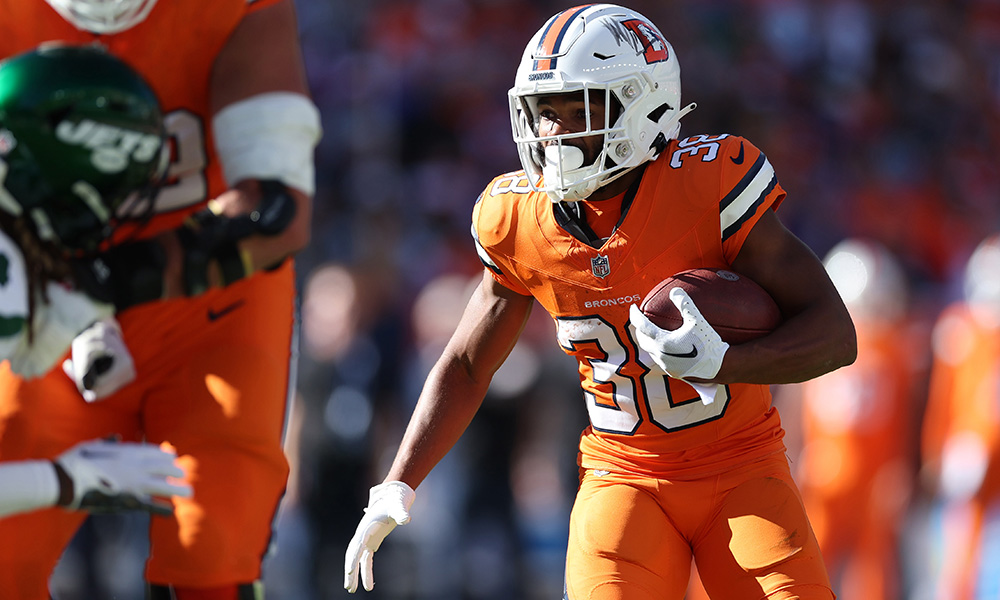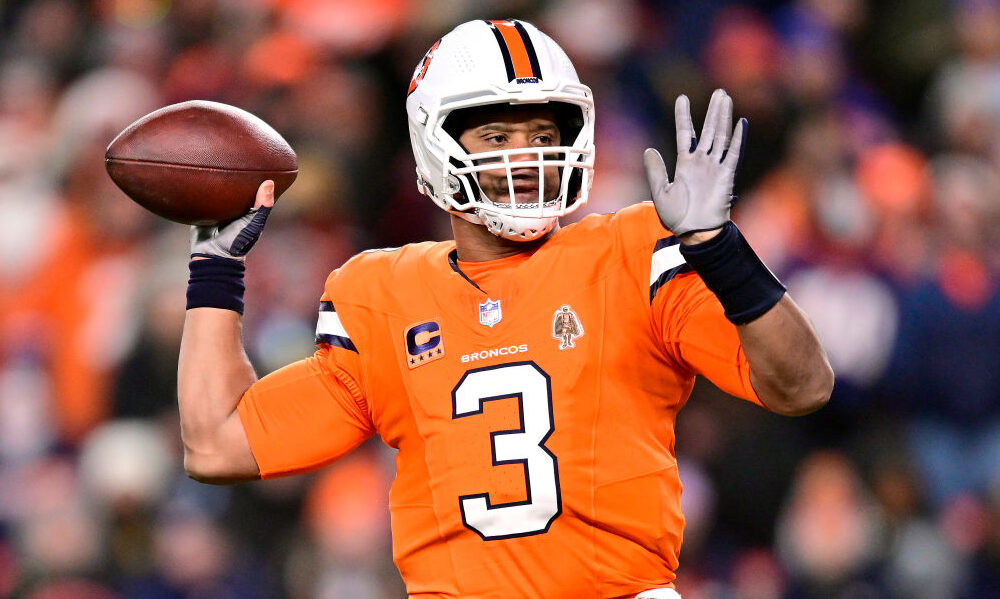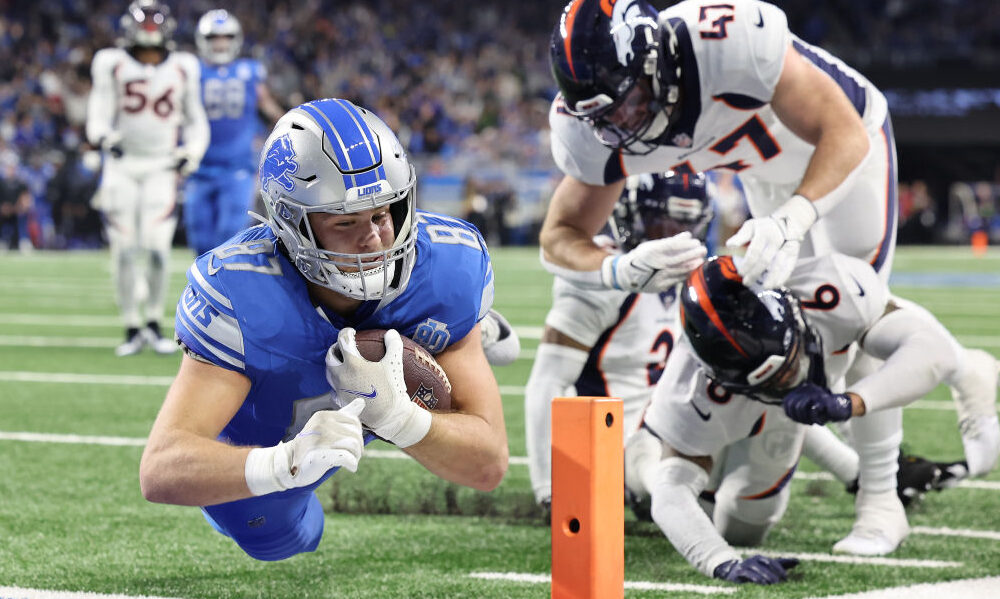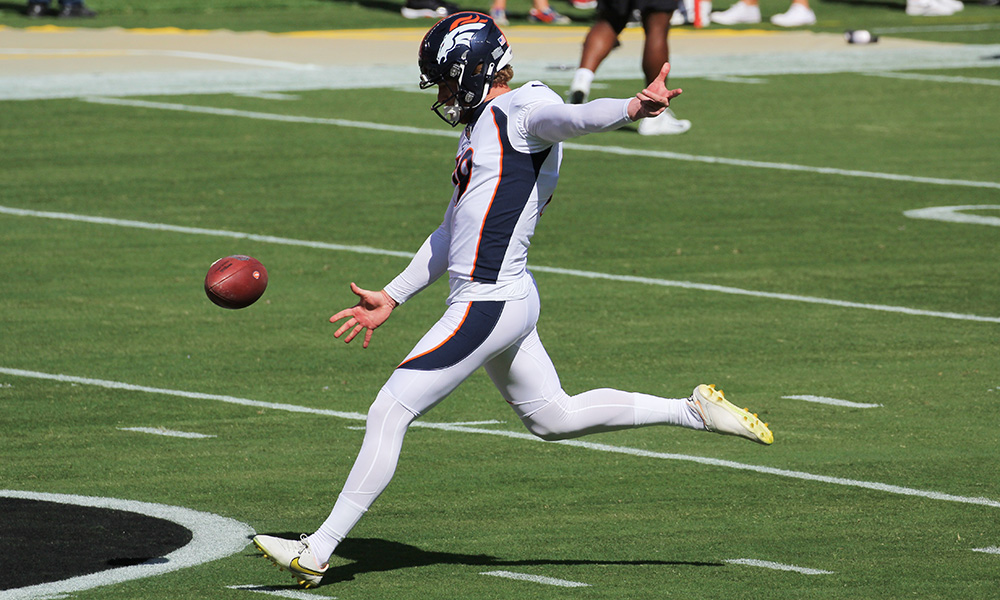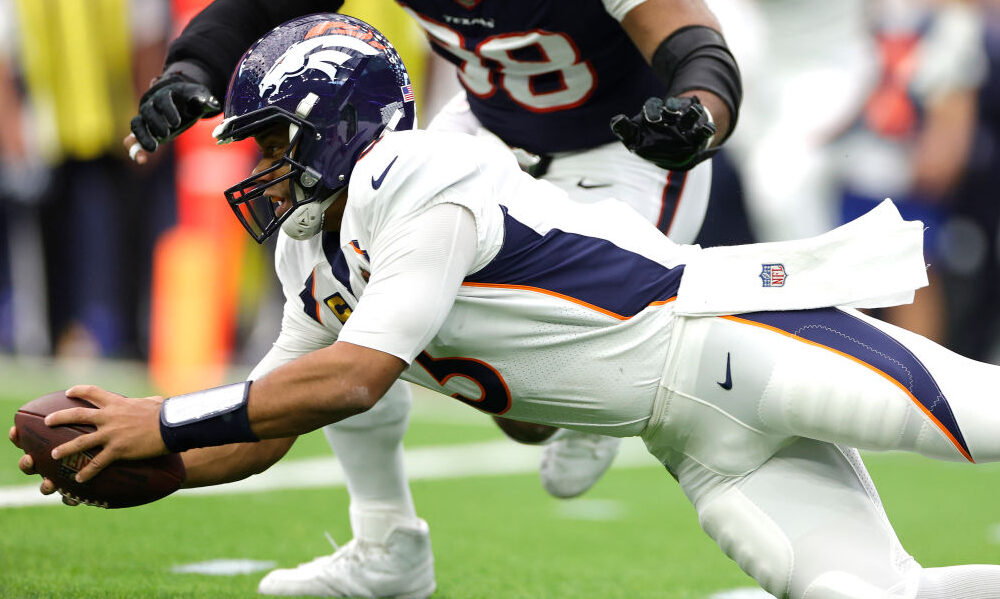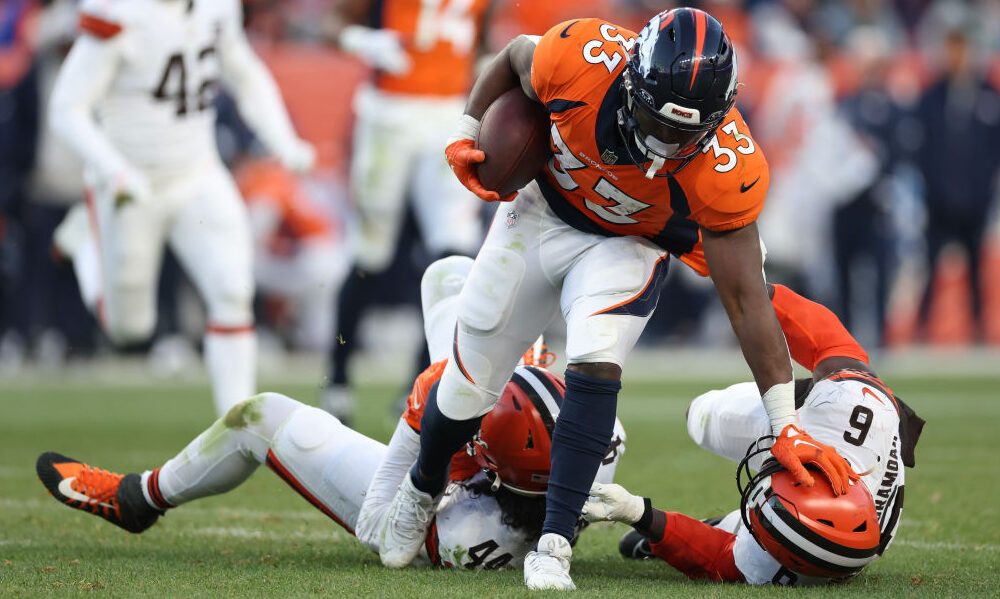The Broncos don’t work without the ‘third phase’ being first-rate
Nov 15, 2023, 11:53 PM | Updated: Nov 16, 2023, 3:15 am
It’s probably unfair to refer to the special teams of the Broncos as the “third phase,” compared to offense and defense. That implies — unfairly — that there is less weight to that part of football than the other two.
Furthermore, the Broncos aren’t having the surge that they’re enjoying without the improvements made there.
Is it perfect? No. And Monday night demonstrated that. But the Broncos wouldn’t have been in position to have the chance at a late-game comeback without the work in that phase.
SPECIAL TEAMS
OVERALL GRADE: B
How do you give a unit that had two fouled-up extra-point attempts — and was a Buffalo penalty away from having a 41-yard missed field goal on its ledger? Well, start with the work at the end of the first half to steal three points as time expired — the first “Hurricane” call to run the field-goal squad onto the field as seconds drained from the clock.
The rest is as simple as Marvin Mims Jr., the blocking work in front of him and his speed to the edge and to creases as they open. One can argue that he is the Broncos’ most dynamic returner since Ring of Famer Rick Upchurch — and to be certain, Mims’ immediate success evokes memories of Upchurch’s arrival in 1975.
OFFENSE
OVERALL GRADE: B-minus
It was a curious game — and one that might have turned out differently if not for advantageous field position for much of the night. Two of the Broncos’ six scoring drives didn’t even generate a first down, and their touchdown drives covered 52 and 54 yards, respectively. Five of Denver’s 12 series didn’t move the chains.
PASSING: B-minus
Denver’s aerial game now relies on resourcefulness more than explosiveness. It’s a good quality to have, and led to a pair of crucial fourth-quarter shovel passes that sustained possessions.
The pass protection broke down too often, with the Bills having their way on the interior for significant stretches of the game. This week’s game against Minnesota should provide the Broncos a chance to recover in this regard, but Cleveland on Nov. 26 will represent a stern challenge for the Broncos’ pass-protection unit.
RUSHING: C-plus
The Broncos ran frequently and demonstrated patience, but lacked explosion. Just one carry by a running back reached a double-digit yardage total. Still, continuing to pound at a foe to set up the occasional downfield shot in the passing game appears to be the Broncos’ most viable path to success, although they may need to consider using Jaleel McLaughlin as a decoy a bit more often, as defenses have caught on to him being targeted or carrying the ball on over 70 percent of his snaps in recent weeks.
DEFENSE
OVERALL GRADE: B-minus
One hates to put too much on one player’s presence or absence — but unfortunately for the Broncos, there was a clear delineation between their defensive form before P.J. Locke’s injury and after it. Denver had a shutout going on the Bills before Locke suffered an ankle injury and was replaced by second-year veteran Delarrin Turner-Yell; Buffalo immediately drove to a touchdown and found the end zone on three of seven series after Locke’s departure.
Takeaways made the difference again, but there will come a time when the Broncos don’t generate four turnovers in a game — and how will the defense fare? It’s a valid question.
PASSING DEFENSE: B-plus
The Broncos weren’t bad against the Bills after Locke’s departure; Allen posted an 81.3 passer rating once Locke went to the dressing room, compared with a 33.7 mark when he was out on the field. But coverage busts led to multiple explosive pass plays for Buffalo from the second quarter onward.
RUSHING DEFENSE: C-minus
This will be an area of significant concern, as the Broncos backslid after weeks of improving form against the run. James Cook and Latavius Murray gashed Denver’s front seven, combining for 177 yards on just 21 carries — a distressing 8.43-yards-per-carry pace.

